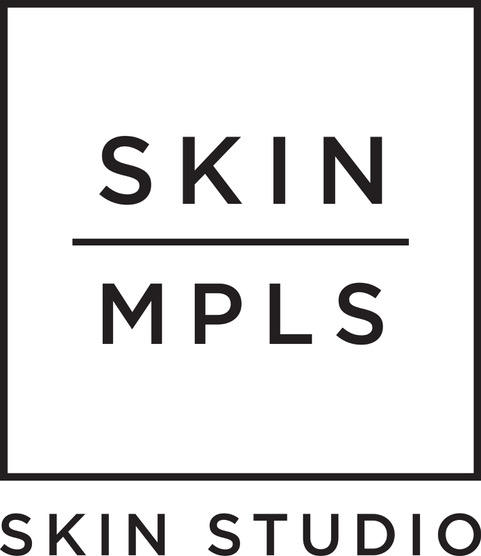Shhh! Best Kept Acne Secrets
Twelve common culprits, you might never expect!
Iodine. In the early 1900s, goiter became fairly prevalent in the US because people were not getting adequate amounts of iodine through their diet. As a cheap and effective remedy, iodine was added to table salt, something people used daily. Today, most people get more iodine than is needed through diet and unfortunately, excess iodine is excreted through the pores which can cause acne on the way out for some people. So, for anyone experiencing acne, try to limit foods with high iodine content like dairy, salt, potatoes, seaweed, preserved foods, and liver. You also want to check for it in your supplements, protein powders, and bars, which all can be hidden culprits.
B12. In too large of doses, B12 may flare acne by throwing off the natural bacterial balance of our skin causing inflammation. If you eat meat, stick to grass-fed meats and cheeses, eggs, salmon, and shellfish to get a healthy amount in your diet and skip it in supplements. For vegans, look for a lower concentration in a supplement or find foods like cereal and oat milk that are fortified with B12.
Acne Marketed Skincare. This one is just plain to mean! We’ve seen pore-clogging ingredients in everything from Cetaphil to spot treatment to “complexion rescue” makeups. There is no guarantee a product won’t clog pores even if it says it’s non-comedogenic, oil-free, or for acne. Don’t fall for advertising, these terms aren’t regulated by the FDA. You must rely on an acne expert aestheticians (hi, it’s us!) or your own ingredient education to find truly effective and safe skincare for acne-prone skin. Check out common pore-clogging products here.
Algae. While it’s a pretty safe bet everything naturally green is good for you, the high iodine content of algae, red algae, spirulina, and chlorella make them an acne trigger. Some sources here can be smoothies, juices, supplements, and skincare products. While we may approve some algae in products here and there — when in doubt, it’s best to avoid high doses both orally and topically.
Biotin. B7/Vitamin H is a vitamin that is produced by the body and marketed as a “hair, skin, and nails” supplement when produced synthetically. What most people don’t know until it’s too late is that getting more than the recommended daily intake of biotin can flare breakouts and sometimes even cause them in typically clear skin!
Birth Control. There are two main types of hormonal birth control – high in progesterone or high in estrogen. Progesterone heavy birth controls can sometimes trigger acne, while estrogen heavy birth controls can sometimes improve hormonal acne. Talk to your doctor about which is right for you for your gynecological/whole-body health and loop in your aesthetician as well so we can help with the skin side of things. And read a little more what we have to say about birth control and acne here.
Blushes and Bronzers. Noticing a connection between breakouts and your cheeks? Everything from blackheads to cystic acne can be caused by fatty waxes, fatty alcohols, and bacteria that fester in our blushes and bronzers. Read here to check out these safe and scary options and remember to wash makeup brushes frequently.
Meat Alternatives. While a vegan diet can be very healthy, it can be very concerning from an acne perspective. When eating vegan and keeping your skin clear, you want to stick as strictly to whole foods as possible. Meat alternatives are almost always a variant of soy or sea proteins that are both high in iodine and can trigger congestion and breakouts. Instead, opt for mushrooms or jackfruit which can be often substituted for meat and are loaded with fiber and vitamins.
Whey Protein. Most of us know that dairy is not acne's best friend. So, it’s no surprise that a highly concentrated product like whey protein can be a huge trigger as well. You’ll want to avoid soy and marine protein as well. Look for a plant option instead such as pea, pumpkin seed or hemp.
Dryer Sheets. Acne in your laundry? Afraid so! Dryer sheets leave behind a fatty wax that can irritate and clog pores. Also, fabric softener, scented detergent, and anything with sodium lauryl sulfate are likely to cause breakouts over time as well. Opt for a free and clear detergent and skip the dryer sheets for anything that touches your face (and chest and back for body acne).
Makeup Wipes/Removers. If your cleanser isn’t able to remove your foundation, it’s not doing its job well enough. Makeup wipes have irritating and pore-clogging ingredients in them. Plus, it’s gross to wipe around all that dirt, oil, and foundation into the skin. Makeup removing balms almost always contain some sort of pore-clogging wax. But if you must use a makeup remover, stick to Bioderma Wipes or Bioderma H20, and then follow up with a thorough cleanse with your favorite cleanser.
Oils. Yes, it’s true that oil attracts oil. But, while it’s a nice sentiment, oil cleansing isn’t the only way to remove oil, dirt, dead skin, debris, and makeup from your skin. The bottom line is that oils are a grey area, and some may be okay for acne… but it’s a risk. And if your skin is oil-rich, you don’t need more oil – your skin may need topical hydration. And if your skin is dry, we will find you an acne-safe moisturizer. So no matter what magic powers these oils claim to have – when the skin is broken out, they need to be shelved. Oils = food for acne. Period.
